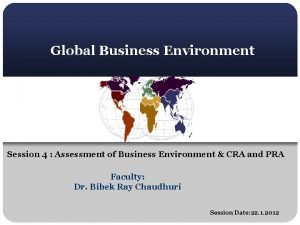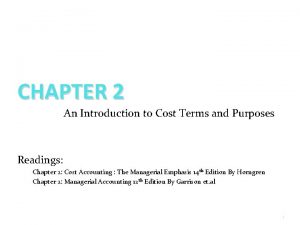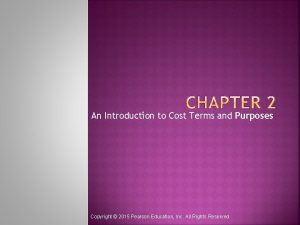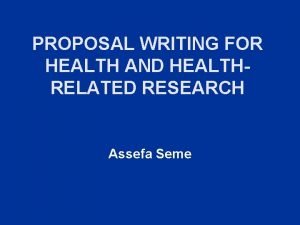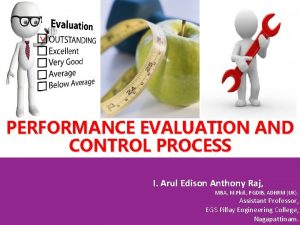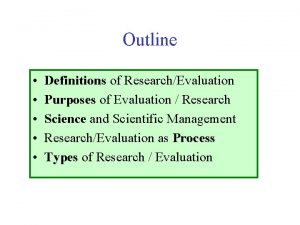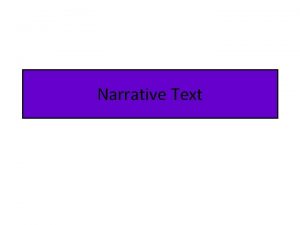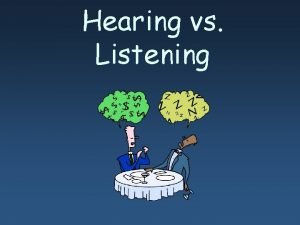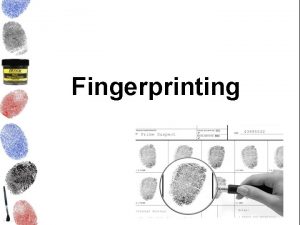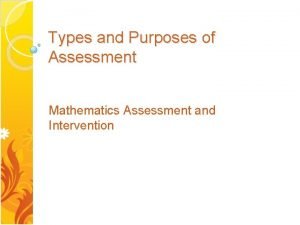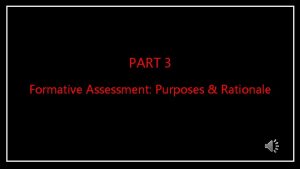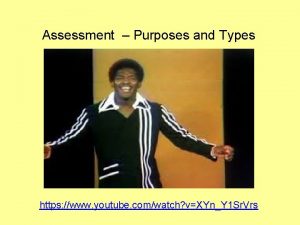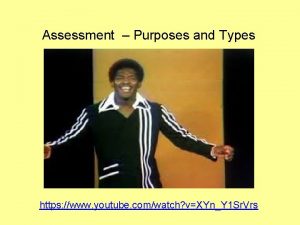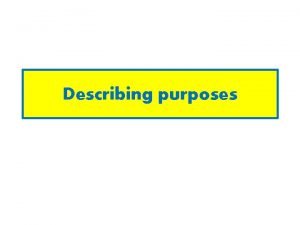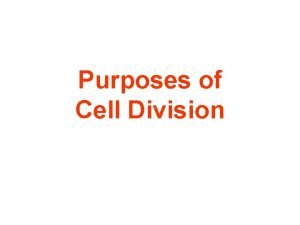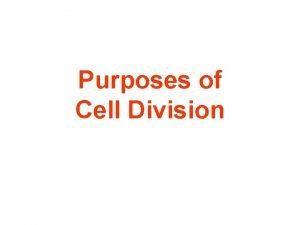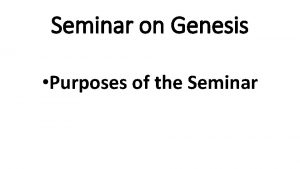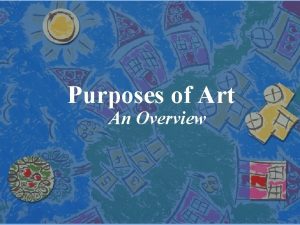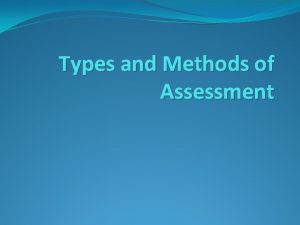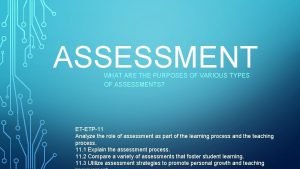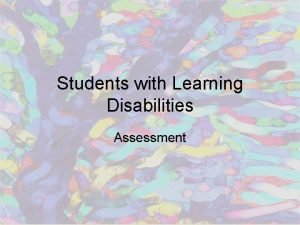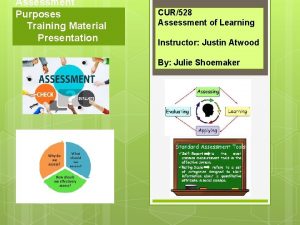Session 1 Purposes and Types of Assessment Jan

















- Slides: 17

Session 1 Purposes and Types of Assessment Jan 7, 2016

Content Learning Targets: Participants will deepen understanding of: • the purposes and differences between summative and formative assessments • assessing at different depths of knowledge • importance of measureable attributes of learning • stanines • evidence based learning

Language Learning Targets: Participants will define: • valid and reliable assessments • summative and formative assessments • stanines • evidence based learning

Review of required course work • 5 professional reflection and analysis discussions (10 pts each). 5 times during the course, you will break into small groups and discuss how a topic might be fully implemented in your classroom. Turn in a small write-up of the discussion. • Intervention strategy (50 pts). Use data to design an intervention strategy to close achievement gap • Assessment research paper (50 pts). Compare & contrast at least two commercially available assessment and/or intervention tools. Provide research that supports them. • 2 Exams (50 pts each).

We will be using the following Padlet: • http: //padlet. com/ront/EE






Self evaluation Where would you place your assessment practice on the following continuums? (this is not to be shared) My main focus is on: quantity of work/presentation Quality of learning marking/grading advice for improvement comparing students identifying individual progress

Guides to valid and reliable assessment • Small group discussion of guide sheet and post on padlet • What is a valid assessment? • What is a reliable assessment?

Assessment? Think about it! Small group activity: • What is the difference between teaching and telling? • What is the difference between assessing and grading? • What is the difference between teaching and learning?

Key elements of formative assessment • Identification by teachers & learners of learning goals, intentions or outcomes and success criteria • Rich conversations between teachers & learners that continually builds and goes deeper • Provision of effective, timely feedback to enable learners to advance their learning • Active involvement of learners in their own learning • Teachers responding to identified learning needs and strengths by modifying their teaching Black & Wiliam, 1998 approaches.

Assessing different depths of knowledge Webb’s DOK levels 1. Recall and reproduction 2. Skills and concepts 3. Short-term strategic thinking 4. Extended thinking The DOK level should reflect the complexity of the cognitive processes demanded by the task outlined by the objective, rather than its difficulty. The DOK describes the kind of thinking required by a task, not the difficulty level.

Assessing different depths of knowledge Activity Use Webb’s DOK levels to evaluate the test items on the “Math 06 example test” found on Canvas.

Measurement, evaluation and stanines Refer to the documents “measurement and evaluation” and “stanines defined” to discuss Criterion Referenced Tests (CRTs) and Norm Referenced Tests (Normed tests) Is the SAGE Utah’s new CRT? Why or why not?
 Word 2016 session 2 post assessment
Word 2016 session 2 post assessment Session 4 post assessment
Session 4 post assessment Merits of non directive counselling
Merits of non directive counselling An introduction to cost terms and purposes
An introduction to cost terms and purposes Foundations of government guided reading activity section 1
Foundations of government guided reading activity section 1 Inventoriable costs examples
Inventoriable costs examples Principle of portfolio assessment
Principle of portfolio assessment Static assessment vs dynamic assessment
Static assessment vs dynamic assessment Portfolio assessment matches assessment to teaching
Portfolio assessment matches assessment to teaching Why do people make art
Why do people make art The logical view of data is
The logical view of data is What are the purposes of research?
What are the purposes of research? The goal of persuasive essay
The goal of persuasive essay Purpose of
Purpose of Evaluation research definition
Evaluation research definition What is the purpose of narrative text types
What is the purpose of narrative text types 5 purposes of listening
5 purposes of listening Fingerprint formation
Fingerprint formation

